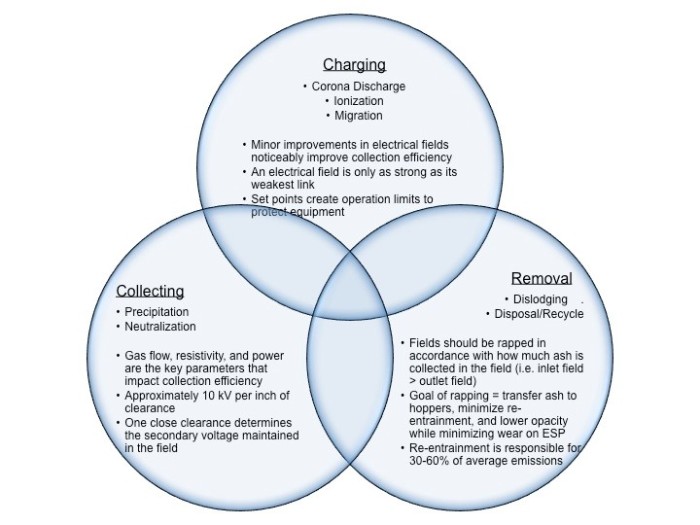Introduction to ESPs: Theory of Operations
All PM either has or can be given a charge “ positive or negative. Let’s suppose we impart a negative charge to all the particles within a gas stream. Then suppose we set up a grounded plate having a positive charge in the same vicinity. What would happen? The negatively charged particle would migrate to the grounded collection plate and be captured due to electrostatic attraction, this is the same phenomenon that causes a balloon to stick to the wall after rubbing it on your hair. As particles collect on the plate, a dust layer would form and accumulate until it was removed with some force that is able to overcome the attractive forces, which we could do by rapping the plate or spraying it with a liquid. Charging, collecting, removing “ that’s the basic idea of an ESP.
Helpful Resources
KnowledgeBase: Theory of Operations: Charging
KnowledgeBase: Theory of Operations: Collecting
KnowledgeBase: Theory of Operations: Removal
KnowledgeBase: Introduction to ESPs
KnowledgeBase: Major Components Overview



